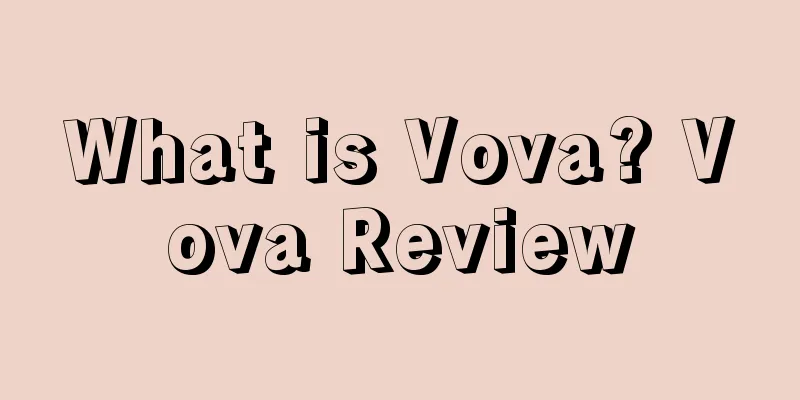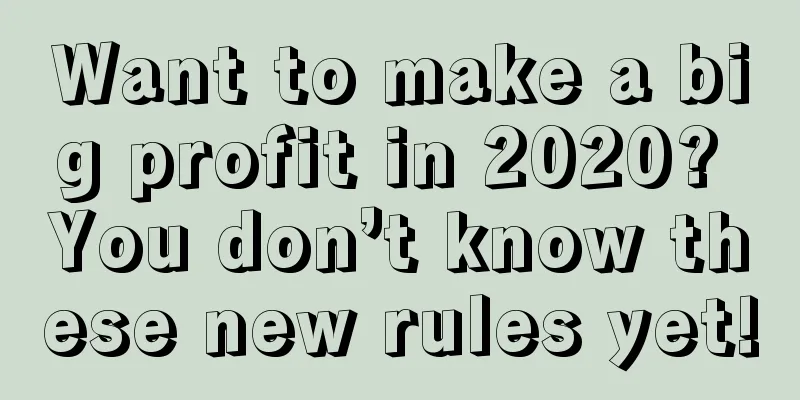Malicious hidden negative reviews are found! What should I do if someone is behind this?

|
Recently, most of our attention has been attracted by the turmoil in the mask category. Few people have noticed that various categories have been a bit unstable recently. Many people in our seller group have reported that their reviews have been deleted, and some people have been given many invisible one-star ratings. (Sellers who want to join the group can scan the code at the end of the article to chat with me privately) As I said before when analyzing the mask market, masks are no longer suitable for small and medium-sized sellers to compete in. Some sellers have begun to focus on other daily consumer goods whose demand has increased significantly due to the epidemic. At this time, some unorthodox practices have emerged, and malicious ratings are one of them. ◆ ◆ ◆ ◆ Invisible negative reviews Ever since Amazon introduced this method of providing star ratings without leaving any information, sellers have had mixed reactions to this rating feature. The rating method is simple and crude and can bring more points to the listing, but there will also be one or two star ratings. The trouble is that unlike ordinary reviews, after leaving a rating, you cannot see the buyer’s account and content, and you don’t know which variant it was posted on. This is the case with a rating that has invisible content. Not being able to see any review information makes ratings more difficult to handle than ordinary negative reviews . If you encounter negative reviews from buyers, you can still look for clues in the content to see if it is malicious. If the negative reviews are real, you can take the initiative to contact them to resolve the negative reviews, but these methods are of no use to ratings that have nothing. In other words, if someone is maliciously using a one-star rating to attack an opponent, there is basically no way to check. Previously, the probability of rating appearing was very small, with at most one or two per month. However, recently, many sellers have reported to me that they have received multiple one-star ratings in a short period of time. The rating has increased abnormally and all of them are negative. It is obvious that someone is operating maliciously. If it is a negative review attack, you can also complain to the customer service based on the negative review content and historical comments of the account, and find out the unreasonable points in the negative review to prove that it is a malicious attack. If the evidence is obvious, the chances of customer service deleting the review are still considerable, but these are invalid for ratings without content. There are currently only two ways to deal with negative ratings: 1. For listings with multiple variations, you can try to delete the parent listing and break up all the variations. Then you can see which variation has the bad rating. If this variation has no good reviews, you can isolate it. 2. If there are no variants or you are reluctant to delete the variants, you can only dilute the reviews, which is also the last resort. The effect depends on the weight of the buyer's account. If the weight is low, even if there are more than a dozen reviews, it may not be able to pull back the star rating. If you encounter such a situation and have to choose to dilute the reviews, it is definitely impossible to find a service provider who sells fake orders in large quantities. The key to fake orders is speed and quantity. Account weight and security are big issues. Even when doing reviews, you must pay attention to the weight and security of the buyer's account. ◆ ◆ ◆ ◆ Buyer account weight Usually when we look for reviews, we look at the buyer's profile and judge whether he is a shopper based on his historical review record and frequency. Amazon identifies accounts that leave reviews too frequently and have too high a rate of positive reviews as fake accounts. So if this account leaves a lot of reviews quickly, don’t hesitate to turn around and leave. Even if it successfully gives you a review, it won’t last long, and in serious cases, it may cause your product to be restricted from reviewing. In addition, the buyer's registration time, delivery address, payment method and credit card information, common login IP and environment , etc. are all factors that Amazon uses to determine the authenticity of the buyer's account. The higher the authenticity of an account, the higher the weight of the review it will naturally have. It is difficult to grasp the above factors by looking at the profile, which is why many sellers found no problems with the profile when they were doing the evaluation, but their reviews were deleted shortly afterwards, because of problems with the above factors. The service provider will definitely not tell you the truth about these issues, which is a big pitfall that is difficult to avoid in the evaluation. |
>>: What kind of evaluation can make a listing get hundreds of orders a day?
Recommend
7+1 ways to fix a blocked Amazon account
When you are uploading goods, your account is sud...
Another big sale that exceeded the performance bet! Will the team receive tens of millions in rewards?
After a difficult 2021, Amazon sellers usher in a ...
What is the Global Renewal Plan? Global Renewal Plan Review
In August 2018, the China International Hair Devel...
Breaking news! Amazon AWS is down, backend crashes, sellers collectively have zero orders!
▶ Video account attention cross-border navigation ...
Alibaba spot track RTS, a new opportunity for cross-border e-commerce sellers!
Based on the new trend of international B-end buye...
What is Amazon Smile Logo Infringement? Amazon Smile Logo Infringement Review
Amazon's logo is a smiley face with an arrow p...
What is Hugo Observer? Hugo Observer Review
Hugo.com Observers can provide exclusive news, ind...
What is ECPSS? Review of ECPSS
Huichao Payment Co., Ltd. is a third - party payme...
Many new regulations from Amazon will take effect, and sellers' operations may be greatly affected!
Earlier this month, Amazon's new warehouse con...
Amazon launches new plan, many FBA fees are waived!
Recently, Amazon announced that it will launch the...
What is Marmalead? Marmalead Review
Marmalead Keywords are very important for SEO. Mar...
BigCommerce launches a new APP! Sellers can add products in Google Merchant Center!
It is learned that BigCommerce recently announced ...
What is X5 Group? X5 Group Review
X5 Group is Russia's leading grocery retail co...
The number of employees has been reduced by 80%, and the inventory has been cleared at a low price! Can Youkeshu cure the sequelae of account suspension?
Everyone has their days of storms and heavy rains...









